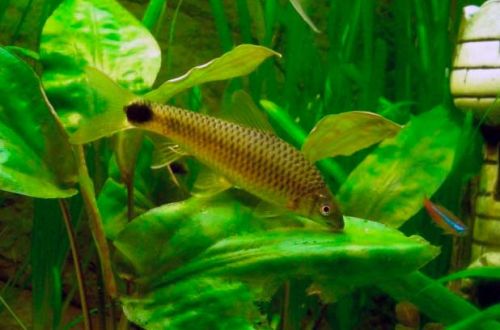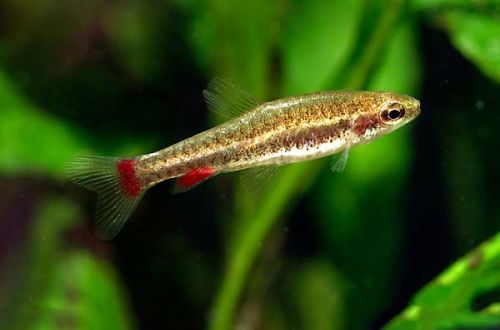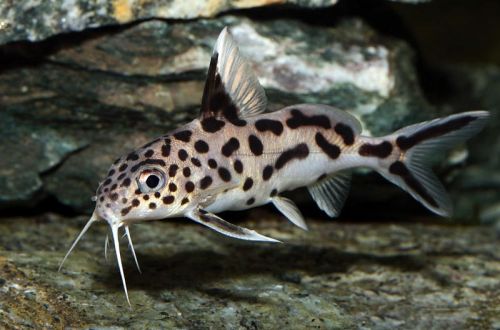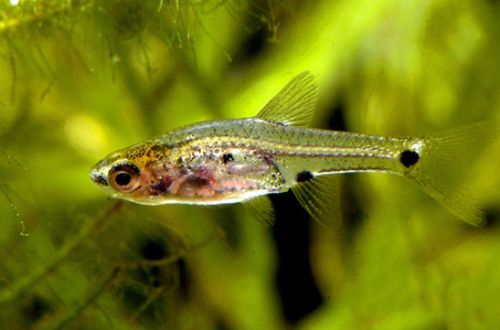
Labeo silver
Silver Labeo, scientific name Labeo forskalii, belongs to the family Cyprinidae (Cyprinidae). The fish comes from the African continent, inhabits the upper basin of the Nile River. Adults live in the main channels of rivers, preferring open areas.

Description
Reaches a length of up to 35 cm, but rarely grows to its maximum size in aquariums. Juveniles are monochromatic, gray, with a dark spot at the base of the tail, which disappears as they mature. Grown up fish acquire a silvery color with greenish hues.
Behavior and Compatibility
Active moving fish. They show territorial behavior and tend to feud with each other for the best area at the bottom of the aquarium. Provided there is enough space in one tank, several individuals can get along. Compatible only with robust fish of comparable size. It is recommended to select from among the species living in the water column or near the surface, in order to avoid excessive competition in the bottom layer.
Brief information:
- The volume of the aquarium – from 200 liters.
- Temperature – 18-25°C
- Value pH — 5.0–7.0
- Water hardness – 1–15 dGH
- Substrate type – any
- Lighting – subdued
- Brackish water – no
- Water movement – light or moderate
- The size of the fish is up to 35 cm.
- Nutrition – plant-based sinking foods
- Temperament – inhospitable
- Keeping alone or in a group in the presence of a spacious aquarium
Maintenance and care, arrangement of the aquarium
For one large Silver Labeo, an aquarium of 200 liters or more is required. For a group of fish, the volume of the tank should be proportionally increased. When keeping two or more individuals, it is desirable to choose the design in such a way that each has its own separate place, including snags, large stones, thickets of plants. Such areas should be located at a distance from each other, for example, at different walls, and between them there was an open space.
Optimal conditions are achieved in soft, slightly acidic water. Regular replacement of part of the water with fresh water with simultaneous cleaning of the soil and the uninterrupted operation of the filtration system will prevent excessive accumulation of waste.
Food
In nature, zooplankton serves as the basis for the diet of juveniles. As they grow older, gastronomic preferences shift towards plant foods. Grown up fish should receive feeds with a high content of herbal supplements. Sinking foods are recommended.





